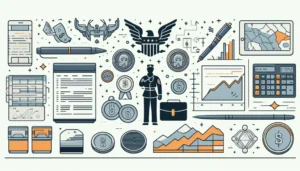Each year, college costs rise a little higher. According to the College Board, the average tuition price for full-time in-state students rose by 2.3% in 2019-2020 to $10,440. And the increase was even higher at private institutions, rising by 3.4% to $36,880 per year.
As costs continue to climb, so does student debt–now over $1.6 trillion in total. As a future student (or parent of one) what can you do to save money on college? One of the ways to reduce the cost of education (and your student debt at graduation) is to consider dual enrollment.
My wife, Kendall, was a dual-enrolled student during her junior and senior years of high school. Looking back, she and her family couldn’t have been more pleased with the experience.
Dual enrollment is a way to attend college classes in high school earning dual credit for both high school and college. It’s a huge money and time saver but some students might find it overwhelming and some colleges do not accept dual enrollment credits.What Is Dual Enrollment?
Dual enrollment is when enrolled high school students take college classes that can count as both high school and college credits. To earn the college credit, students must pass the dual enrollment course with a grade of at least a C.
Dual enrollment programs tend to be popular at community colleges. In fact, a 2010 study found that 15% of new community college students were high school dual enrollment students (and the number is probably higher today.) However, many major four-year universities offer dual enrollment courses as well. Also, some states allow students to enroll in online classes.
Depending on where you live, you may even be able to earn your entire associate’s degree during high school through dual enrollment. My wife, Kendall, was able to do this. And if you plan to attend a different university for the rest of your college career, your dual enrollment credits will often be transferrable (especially if you choose an in-state public university.)
Listen: College Hacking Toolbox
Who Is Eligible For Dual Enrollment?
Eligibility rules will vary by state. But in many states, you’ll need to be at least a junior in high school to take dual enrollment courses. However, in some states, you can dual enroll much earlier. For instance, in Florida (where I live), dual enrollment is allowed as early as 6th grade.
A minimum GPA is another common requirement. In Florida, you must have at least a 3.0 unweighted GPA to qualify for dual enrollment. Some states may also have an SAT or ACT score criteria. For example, in Mississippi, students need an ACT score of at least 30 or an equivalent SAT score. Finally, some states may require that students receive a written recommendation letter from a school principal or guidance counselor.
What Are The Benefits Of Dual Enrollment?
Ok, so now that we’ve defined what dual enrollment is, it’s time to answer the important question. Why should students consider dual enrollment? As it turns out, there are several advantages.
Save Time And Money!
In most states, colleges are able to give dual-enrolled students a steep discount on course tuition due to government funding. According to Saving for College, dual enrollment courses cost $0 to $400. That’s far less than the average cost for a traditional college course.
Dual enrollment also helps students fast track their college graduation. Depending on how many courses are taken during high school, students may be able to shave one to two years off of their time in college, which helps them enter the workforce sooner. And that’s a double whammy that could make a bigger difference in your finances than you may think.
For example, imagine you’re able to graduate from high school with your associate’s degree due to dual enrollment. Then you enroll in a university that charges $15,000 in tuition per year. Two years later, you graduate with your bachelor’s degree–effectively saving $30,000 (two years) in tuition cost.
But your tuition saving isn’t your only benefit. Entering the workforce two years earlier is also is a big deal. Imagine that you’re able to land a full-time job paying $50,000 per year. Two years later, you would have earned $100,000 in income before the traditional student has even earned a dime. So, in this example, dual enrollment would have been worth $130,000 to you in total savings and earnings!
Related: How My Son Saved 2 Years And $18,258 In College Tuition
Prepare For Life As A College Student
The transition from high school to college life can be pretty severe for some students. In high school, you may be able to finish all your homework for the week in one night or even during your homeroom hour. Good luck with that in college. The expectations are higher and there’s just a different level of rigor to the entire experience.
And the hard part for most college students is that they get thrust head-first into this challenging new academic world. They go from summer break to a full classload of classes that are more difficult than what they dealt with in high school. That can be a pretty tough culture shock. And, for many students, it can cause them to struggle with grades during their first semester.
But with dual enrollment, students are able to familiarize themselves with the workload and expectations of college in bite-sized portions, one or two courses per semester. Taking a few dual enrollment courses in high school could make your first full semester of college more manageable and enjoyable.
Increase Your Odds Of Attending And Graduating From College
Study after study has shown that dual enrollment has a positive effect on the future academic career on students. Here are three quick examples:
- A 2017 study by Community College Research Center found that 88% of dual enrollment students continued college after high school.
- A 2017 study in Illinois found that dual enrollment increased students’ odds of earning a bachelor’s degree by 9 percentage points.
- A 2013 national study showed an even more dramatic increase in the odds of graduating (12 percentage points), with the biggest impact seen in students from low-income backgrounds.
These stats aren’t too surprising. When dual-enrolled students graduate from high school, they face an easier and less expensive road to earning a college degree. It only makes sense that they would be more prone to stick with their education than the typical high school grad.
Related: Applying To Colleges? Why You Should Consider Small Private Schools
Improve Your Academic Resume
Earning college credits during high school shows motivation and a proactive mindset towards your education. And those are two attributes that look good in the eyes of college admissions boards and scholarship committees.
If you’re hoping to get accepted to a competitive university, completing dual enrollment courses during high school could help your cause–especially if your high school doesn’t offer advanced classes.
Are There Drawbacks To Dual Enrollment?
Depending on your particular situation, there could be a few downsides to dual enrolling. Here are two things you’ll want to keep in mind.
Some Colleges Don’t Accept Dual Enrollment Credit
Every college is free to set its own guidelines regarding the acceptance of dual enrollment credits. Some universities may only accept a portion of your dual enrollment credits, while other schools may not accept any at all.
But don’t panic. As long as you’re not too choosy about the college you plan to attend, you should be fine. Typically, in-state public universities don’t give students any problems with transferring dual enrollment credits. However, you may run into more problems if you try to enroll in a private or out-of-state public university.
If you’re ok with attending an in-state public college, then dual enrollment could be a great idea. But if you’re determined to attend a prestigious college (like an Ivy League school), it may not be the best route. In that case, you’ll probably want to consider taking advanced courses instead.
Dual Enrollment Could Be Logistically Or Academically Overwhelming
While online dual enrollment classes are becoming more popular, they’re far from the mainstream. In most cases, you’ll probably be driving back and forth from your high school to your local community college. And that could get old quickly.
Also, don’t forget, you’ll be taking real college courses. That could be a lot to handle on top of your regular high school coursework. And, in some cases, trying to juggle both could actually cause your high school GPA to suffer.
If your high school grades are dropping, that kind of defeats the whole purpose of dual enrollment. For all these reasons, new dual enrollment students may want to take things slow. Try dipping your toes in the water with one course per semester before diving headfirst into a full course load.
What Are The Alternatives To Dual Enrollment?
Not sure that dual enrollment is right for you? There are a few other ways to earn college credits during high school.
AP And IB Programs
Many high schools offer advanced classes for their ambitious students. Depending on where you go to school, your school may not have an Advanced Placement (AP) or International Baccalaureate (IB) program. But, if they do, that may be a better option for earning college credits than dual enrollment.
The first benefit of taking advanced classes at your high school is that you don’t have to commute back and forth to multiple campuses. Second, you won’t have to worry as much about credit acceptance, as most colleges fully recognize AP and IB course credits.
Third, some AP and IB courses may actually be more rigorous than an introductory course that you’d take at the local community college. If that’s the case, taking the harder AP or IB course could look better on your academic resume.
AP and IB courses are free to take if your local high school offers them. However, if you want to earn college credits, you’ll need to take an end-of-year exam. And, for either program, that means you’ll need to pay an exam fee (both cost around $100). It should be pointed out that you don’t need to pass any additional exam to earn college credits for dual enrollment courses.
CLEP Tests
CLEP (the College-Level Examination Program®) is a college credit program run by the College Board (the same organization that runs the AP program). Currently, there are 34 CLEP exams that cover introductory-level college topics. For each exam that you pass, you could earn one to three college credits that are accepted at over 2,900 U.S. colleges.
The idea behind CLEP exams is that students who have prior knowledge of a given subject should be given the opportunity to essentially “test out” of the corresponding college course. But you can also prepare for CLEP exams in one of two ways. First, you can purchase the CLEP Official Study Guide, which is released each academic year.
And, second, you can enroll in a CLEP course for FREE, through Modern States’ Freshman Year for Free Program. With this program, you’ll get free access to up to eight courses, including textbooks and other materials. And when you’re ready to take the CLEP exam, Modern States will pay for your exam fee!
Early Admission
When most students hear the term “early admission” they think of the more recent phenomenon of applying early for college (usually in November of their senior year) and receiving early admission decisions (typically in January or February).
But that’s not the kind of early admissions that we’re talking about there. Some schools have an early admissions program that allows high school seniors to enroll in college a year early. This is different than dual enrollment in that colleges actually give high-school-aged students a full-time course load.
Early admission programs are typically only available to a very select number of high school seniors per year. However, if you’re able to get accepted into an early admissions program, it could essentially allow you to complete your freshman year of college a year early.
Wondering if any schools near you offer an early admissions program? Check out this handy list compiled by College Transitions.
The Bottom Line
Don’t just assume that a college education must equal massive student loans. By earning college credits in high school, whether through dual enrollment or other strategies, you could save a lot of time and money.
Related Articles:

The Simple Startup: A Beginners Guide to Starting a Business
This is a guidebook for teachers, parents, and students interested in starting student businesses - but aren't sure where to start or how to move forward. You'll learn everything you need to know to help students take their ideas and turn them into profitable businesses.



